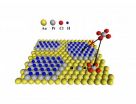(Press-News.org) MAYWOOD, Il. - A survey has identified career burnout as a significant problem among neurologists who predominantly work with hospital inpatients.
Nearly 29 percent of these "neurohospitalists" said they had experienced burnout, and 45.8 percent said they were concerned about burnout but had not yet experienced it. (Burnout was defined as maintaining a schedule so burdensome as to limit the time a physician will or could spend as a neurohospitalist.)
Results were published in the December, 2012 issue of Neurology® Clinical Practice. Among the co-authors is Jose Biller, MD, chair of the Department of Neurology of Loyola University Chicago Stritch School of Medicine. Biller is chair of the Neurohospitalist Section of the American Academy of Neurology.
Many neurologists have limited or abandoned seeing hospital patients because of reduced reimbursement. At the same time, inpatient neurologic care is becoming increasingly complex. The neurohospitalist movement has emerged as a possible solution to both problems.
In the survey, respondents said advantages of the neurohospitalist model include timely and high-quality care, improved continuity of care during the hospital stay, familiarity with hospital systems and defined work schedules.
Disadvantages included long work hours, poor reimbursement and transitions between the hospital and clinic settings.
Researchers conducted a random sample of 1,293 neurologists, with a response rate of 41.6 percent. Among those who responded, 16.4 percent said they were neurohospitalists. (A neurohospitalist was defined as a neurologist whose predominant focus is the care of inpatients as either a consultant or primary attending physician.)
Researchers surveyed an additional 498 neurologists (response rate, 55.8 percent) who specialize in such areas as critical care, stroke and emergency neurology and are thus more likely to be neurohospitalists. Combining results from both surveys, researchers found that the most common diagnosis neurohospitalists see is stroke and transient ischemic attack (mini stroke), 83.1 percent, followed by delirium/encephalopathy, 9 percent, and seizure, 2.6 percent.
Researchers concluded that neurohospitalists "are a potential solution to a number of the pressures on traditional neurologist practice." However, challenges need to be resolved, "not the least of which are potentially problematic transitions of care and burnout concerns given a small workforce. As the model matures, further study will be worthwhile, of both neurohospitalists and their impact on the inpatient care of patients with neurologic disorders."
Other co-authors are David J. Likosky, MD, of the University of Washington (first author), S. Andrew Josephson, MD, of the University of California San Fransisco, Mary Coleman of the American Academy of Neurology and W. David Freeman, MD, of the Mayo Clinic Jacksonville.
Biller is one of five neurohospitalists at Loyola. "I believe the neurohospitalist model we have developed at Loyola will evolve into a national paradigm on how to optimally provide care of hospitalized patients with a wide array of neurologic disorders," he said.
Biller added that hospital administrators "should support fellowship training for this new breed of neurologists."
### END
Hospital-based neurologists worry about career burnout
2012-12-13
ELSE PRESS RELEASES FROM THIS DATE:
Predicting risk of arrhythmias and sudden cardiac death: There's a computer model for that
2012-12-13
VIDEO:
Scientists are using "virtual hearts " to better understand risk in real-world patients. Researcher Coeli Lopes, Ph.D., University of Rochester Medical Center, assistant professor at the Aab Cardiovascular Research Institute, describes...
Click here for more information.
A computer model of the heart wall predicted risk of irregular heart rhythms and sudden cardiac death in patients, paving the way for the use of more complex cardiac models to calculate the ...
New policy brief examines impact of occupational injuries and illnesses among low-wage workers
2012-12-13
WASHINGTON, D.C.—Low-wage workers, who make up a large and growing share of the U.S. workforce, are especially vulnerable to financial hits that can result from on-the-job injuries and illnesses, according to a policy brief released today by researchers at the George Washington University School of Public Health and Health Services (SPHHS). The policy brief, "Mom's off Work 'Cause She Got Hurt: The Economic Impact of Workplace Injuries and Illnesses in the U.S.'s Growing Low-Wage Workforce," was released along with a white paper showing that such workplace injuries and ...
Time restrictions on TV advertisements ineffective in reducing youth exposure to alcohol ads
2012-12-13
Efforts to reduce underage exposure to alcohol advertising by implementing time restrictions have not worked, according to new research from the Center on Alcohol Marketing and Youth (CAMY) at the Johns Hopkins Bloomberg School of Public Health and the Dutch Institute for Alcohol Policy. The report, published in the Journal of Public Affairs, confirms what Dutch researchers had already learned in that country: time restrictions on alcohol advertising actually increase teen exposure, because companies move the advertising to late night.
In 2009, Dutch regulators sought ...
'Curiosity' can be positioned with eclipses
2012-12-13
Observations from 'Curiosity' when Mar's moon Phobos crosses in front of the sun, like in September, help us to understand exactly where the rover is on the red planet. Researchers at the Complutense University of Madrid (Spain) have developed a method for achieving precisely this.
The exact location of Curiosity on the surface of Mars is determined using data transmitted from its antennas as well as the space probes that orbit the red planet. It is very unlikely that these systems would fail but in such an eventuality there would be an alternative for determining the ...
Uncovering a flaw in drug testing for chronic anxiety disorder
2012-12-13
Pre-clinical trials — the stage at which medications or therapies are tested on animals like laboratory mice — is a crucial part of drug development. It's only then that scientists can assess benefits and side effects before a drug is administered to patients.
Now, Prof. Ilan Golani of Tel Aviv University's Department of Zoology and Sagol School for Neuroscience and his fellow researchers Prof. Yoav Benjamini of TAU's Department of Statistics and Operations Research and the Sagol School of Neuroscience, and Dr. Ehud Fonio of the Weizmann Institute are questioning the ...
UAlberta medical researchers discover new potential chemotherapy
2012-12-13
Medical researchers at the University of Alberta have discovered that knocking out a particular "partner" gene is the Achilles' heel of some cancers.
Cancer causing genes often have a partner in crime, meaning when either of the two genes is active in cancer cells, the tumour grows. The challenge for researchers has been pinpointing the genes’ “lethal partners.” Loss of one of the partners alone isn’t deadly to the cell, but if both are gotten rid of, the cancer cells are destroyed.
Faculty of Medicine & Dentistry researcher Michael Weinfeld and his collaborators, ...
New technique for minimally invasive robotic kidney cancer surgery
2012-12-13
DETROIT – Urologists at Henry Ford Hospital have developed a new technique that could make minimally invasive robotic partial nephrectomy procedures the norm, rather than the exception for kidney cancer patients. The technique spares the kidney, eliminates long hospital stays and provides better outcomes by giving the surgeon more time to perform the procedure.
Dubbed ICE for Intracorporeal Cooling and Extraction, the technique may allow more kidney cancer patients to avoid conventional open surgery – now used in the vast majority of cases – and its possible complications, ...
Regenstrief study finds that generic drugs often have incorrect safety labeling
2012-12-13
INDIANAPOLIS -- Despite U.S. Food and Drug Administration regulations requiring generic medications to carry identical warnings to those on corresponding brand-name products, a study by Regenstrief Institute researchers has found that more than two-thirds of generic drugs have safety-warning labels that differ from the equivalent brand-name drug.
The investigators reviewed 9,105 product labels for over 1,500 drugs available on DailyMed, an online repository of labeling information maintained by the FDA and the National Library of Medicine. Of the 1,040 drugs with more ...
Novel NIST process is a low-cost route to ultrathin platinum films
2012-12-13
A research group at the National Institute of Standards and Technology (NIST) has developed a relatively simple, fast and effective method of depositing uniform, ultrathin layers of platinum atoms on a surface.* The new process exploits an unexpected feature of electrodeposition of platinum—if you drive the reaction much more strongly than usual, a new reaction steps in to shuts down the metal deposition process, allowing an unprecedented level of control of the film thickness.
Platinum is a widely used industrial catalyst—in automobile catalytic converters and hydrogen ...
Solar power prices to continue falling through 2025, experts say
2012-12-13
Prices for solar modules—the part of solar panels that produce electricity—will continue to fall, in line with the long-term trend since 1980, according to a survey of experts by Near Zero, , a nonprofit energy research organization. However, for prices to keep falling for the long term will require continued committment to research, such as on materials used for making solar modules.
To get a sense of what future prices for solar power are likely to be, as well as other challenges and bottlenecks that the industry faces, Near Zero conducted a formal, quantitative survey ...



